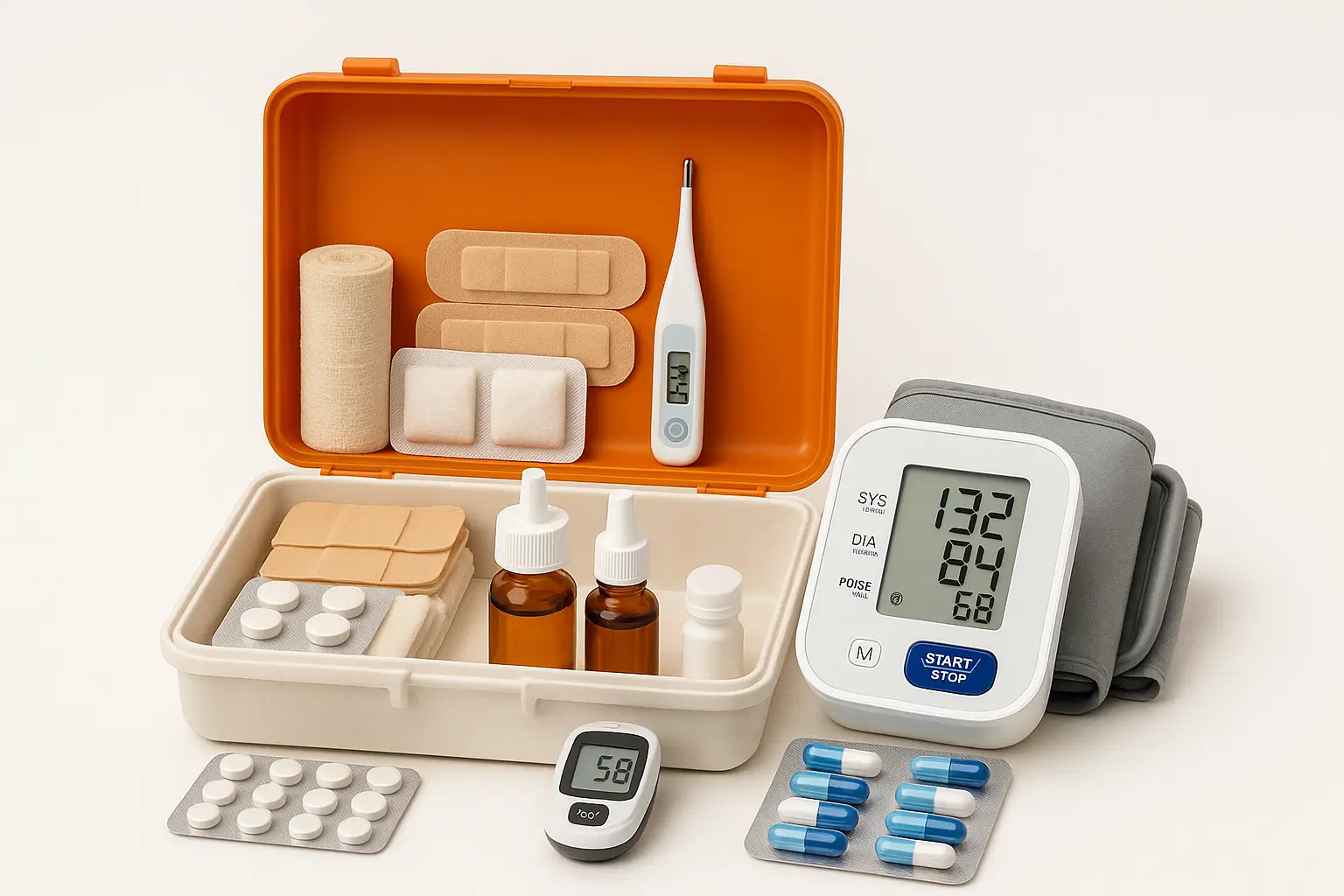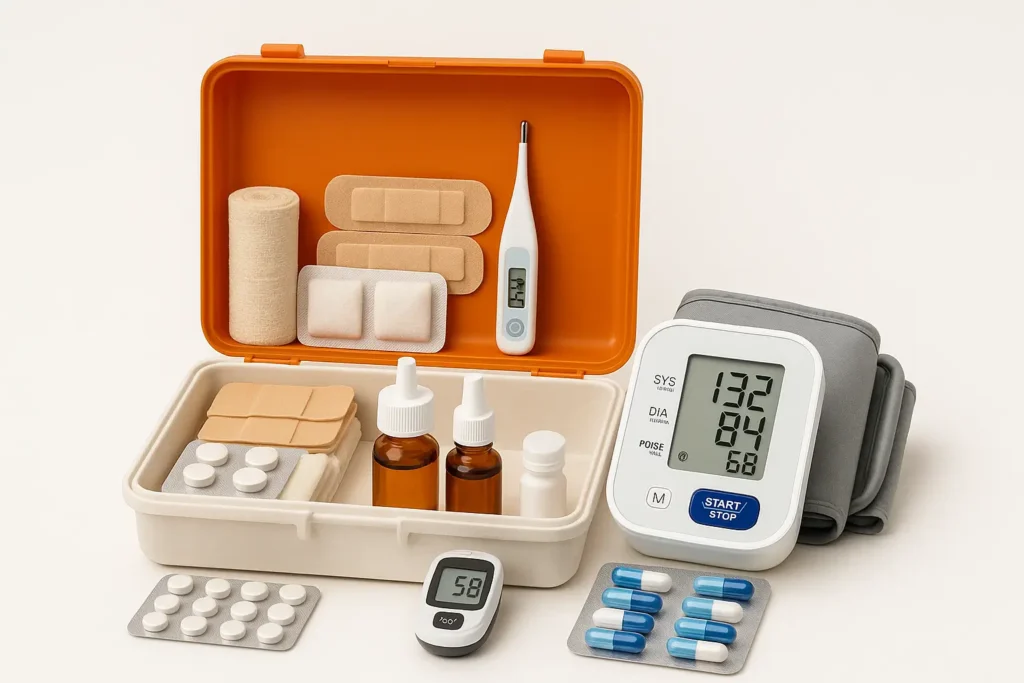Dressing supplies – first aid at your fingertips
Plasters, bandages, sterile gauze, and tourniquets are the foundation of any first aid kit. Whether it’s a minor cut in the kitchen or a more serious injury while a child is playing, a quick response is crucial. It’s also worth having a plaster without a dressing that can be cut to size, as well as special waterproof plasters. A well-stocked first aid kit should also include scissors, disposable gloves, and safety pins.
Painkillers and antipyretics – relief in moments of discomfort
Headaches, toothaches, fevers, or menstrual cramps—these are ailments that can surprise you when you least expect them. That’s why your medicine cabinet should always stock up on medications containing paracetamol or ibuprofen. For children, it’s worth stocking up on appropriate syrups or suppositories. However, remember to always check expiration dates and dosages, especially for medications intended for young children.
Disinfection preparations – the fight against microorganisms
All types of cuts, scratches, and bites require quick cleaning. It’s a good idea to have a skin disinfectant in your first aid kit—e.g., one based on octenidine or chlorhexidine. Avoid ethyl alcohol—it can irritate wounds, especially in children. Antibacterial hand gel and disinfectant wipes, which can also be used while traveling, are also useful.
Thermometer – a must-have when you are sick
While it may seem obvious, a thermometer is often forgotten or broken. Monitoring body temperature is crucial during infections, especially in children. It’s worth investing in a non-contact or electronic thermometer with a soft tip, which provides quick and accurate results. It’s also a good idea to have spare batteries—just in case.
Medicines for bites, allergic reactions and stomach ailments
Insect bites and rashes in summer, overeating and indigestion in winter. At any time of year, it’s worth having on hand effervescent lime, an antihistamine (e.g., for allergies), a soothing gel for bites, and remedies for stomach problems: electrolytes, activated charcoal, probiotics, or diarrhea medicine. While these may seem like “optional extras,” in practice, they save your daily life.
Summary: A first aid kit tailored to your family’s needs
In addition to the items mentioned above, it’s a good idea to tailor the contents of your first aid kit to the individual needs of your household—for example, regular medications, an inhaler for asthmatics, or a glucometer for diabetics. It’s also important to store it in a dry, easily accessible place (but out of reach of children) and replenish its contents regularly.
A well-maintained first aid kit is a sign of care—for yourself and your loved ones. Don’t wait for an emergency. Check what’s in your first aid kit today!

